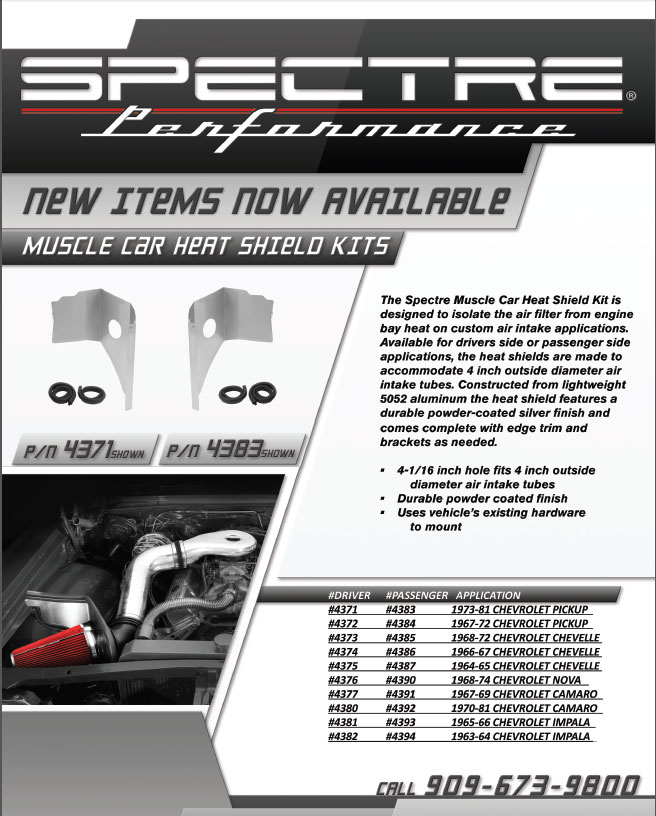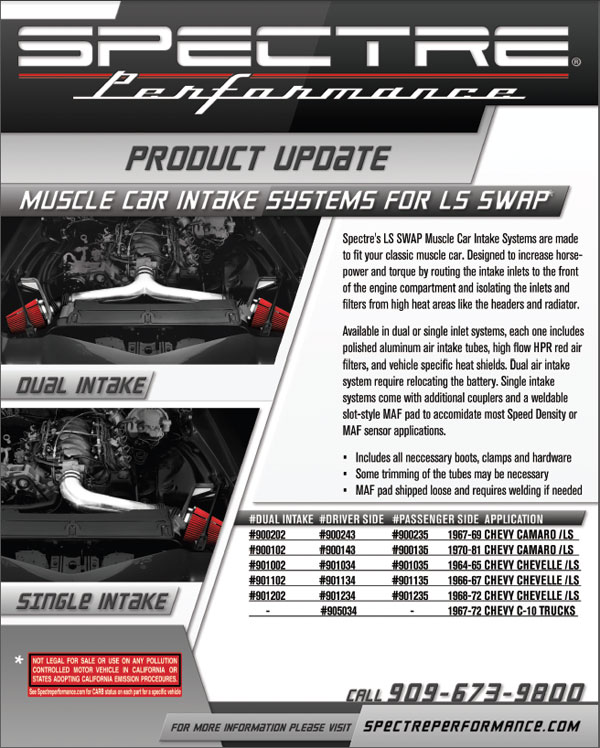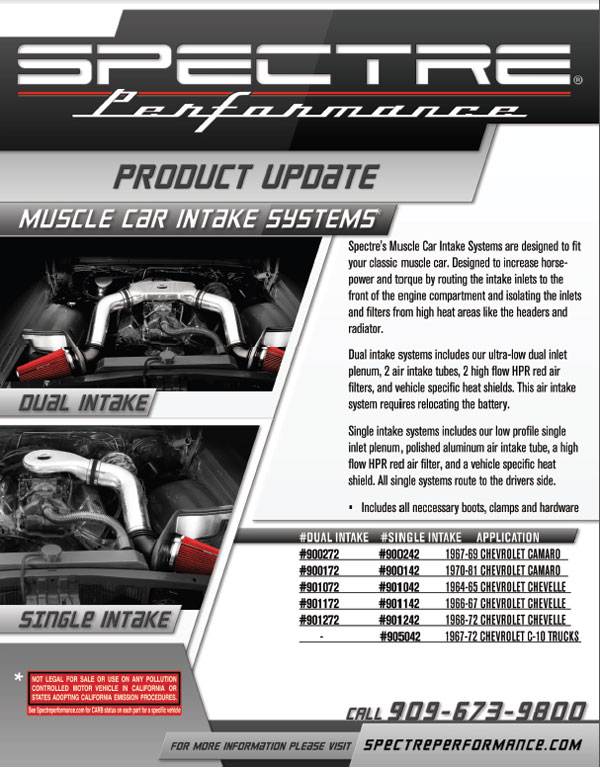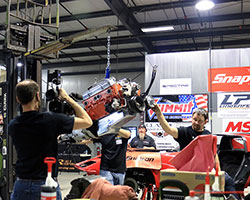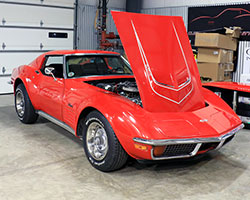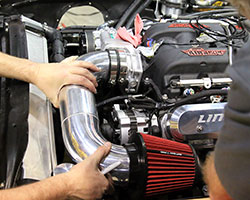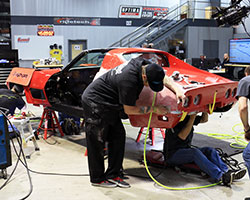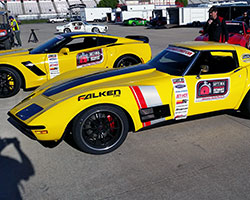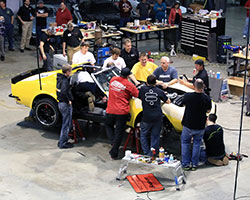Spectre Performance Fuel System Components, Upgrades, and Accessories
- May 4, 2015
|
Spectre Performance offers the parts and accessories needed to add those finishing touches to fuel lines, hoses, connections and more. Fuel is a critical component of the air, fuel and spark trifecta that allows an internal combustion engine to make power. So why not make the fuel system look great and function at its best? Spectre offers various fuel line, fuel filter, fuel pressure gauge and fuel pressure regulator parts & accessories. In addition the parts needed to transfer fuel; Spectre Performance offers more accessories in the way of fuel pump block-off plates, hose fittings, vacuum caps, cables, brackets, return springs, carburetor adapters and spacers to help connect everything.
Spectre Performance Carburetor Fuel Lines: Spectre Performance fuel lines are designed to fit Holley 4150/4500, 3310/4150, 3310 8-21/32 inch, 4150 9/15 inch, dual feed and standard single feed carburetors, as well as the Edelbrock/Carter single feed carburetors. Spectre Performance Fuel Filters:
Ensuring clean fuel is delivered to an engine is very important. Spectre offers clear-glass body inline fuel filters and universal in-line canister fuel filters. The glass body of Spectre Pro-Plumbing fuel filters allow for easy inspection and the included 3/8 inch Magna-Clamp fittings will make sure the filter is securely connected and leak free. Spectre also offers replacement filter elements and O-rings for Spectre fuel filters. These fuel filters are not designed for fuel injected engines.
Spectre Performance Fuel Pressure Gauges and Regulators: When modifying or upgrading a vehicle’s fuel system, it is always a good idea to keep an eye on the fuel system pressure with fuel pressure gauges and regulators. For this reason, Spectre offers a 0-15 PSI fuel pressure gauge, adjustable fuel pressure regulators, and even a fuel pressure gauge with an inline fitting.
Spectre Performance Hose Fittings: Spectre Performance hose fittings are designed to adapt a 3/8 inch NPT threaded fitting to a 3/8 inch hose barb fitting and works both with fuel or air as needed. These fittings feature triple chrome plating for a long lasting look and shine.
Spectre Performance Fuel Pump Block-Off and Mounting Plates: When upgrading to an electric fuel pump the old mechanical fuel pump opening needs to be blocked off. Spectre Performance offers fuel pump block off plates for Chevy big block and small block engines. These attractive fuel pump block off plates come with chrome or polished aluminum finish. The polished aluminum plates feature a ball milled surface.
Spectre Performance Carburetor Adapters and Spacers: Spectre Performance offers a wide range of 4 barrel and 2 barrel carburetor adapters for different carburetor and intake manifold combinations. Spectre also offers carburetor spacers designed to raise the carburetor, allowing more air inside of the intake manifold, and to help increase performance.
Spectre Performance Vacuum Caps: Spectre’s assortment of multi-colored Vacuum Caps is designed to tightly cap off any un-used vacuum ports. The assortment includes four of each size and color: black 3/8 inches, white 5/16 inches, red 1/4 inches, blue 3/16 inches and yellow 1/8 inches. Made from high quality materials these offer a universal fit.
Spectre Performance Throttle Cables, Brackets and Return Springs: Spectre Performance throttle cables, brackets, and return springs are designed to be a simple and effective solution that works with many different applications, both on 4 barrel and 2 barrel carburetors. Manufactured from the highest quality materials, Spectre Performance throttle cables, brackets, and return springs ensure a smooth and safe throttle function.
Spectre Performance Engine Hoist Plate and Carburetor Cover: The Spectre carburetor lift plate bolts onto 2 BBl or 4 BBl manifolds and allows the engine to be lifted with an engine hoist. This lift plate provides a stable and easy lifting point and creates a seal over the intake for safe storage. It is made from heavy gauge steel with gold Iridite plating to resist corrosion. Since 1983 Spectre Performance has designed and offered unique, innovative, parts and components to fuel your car or truck obsession. Whether your fixation happens to be a classic American muscle car or pickup truck, Spectre will help fuel your passion for performance. Browse all Spectre automotive products by category at SpectrePerformance.com. Or use the Products by Vehicle Search to find Spectre performance products specifically made for your vehicle. To find a Spectre dealer near you use the Spectre Dealer Locator. |
|||||||||










